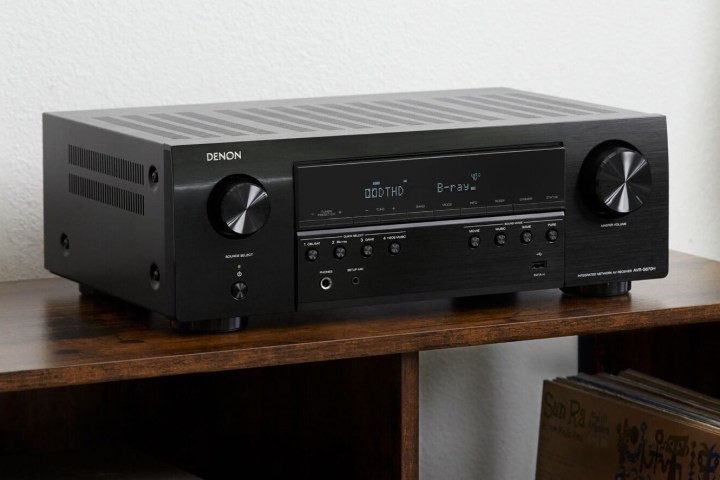
Denon has added two new S-Series 8K-capable AV receivers that are aimed at small- and medium-sized rooms. The AVR-S670H ($549) is a 5.2-channel model, and the AVR-S770H ($649) is a 7.2-channel, Dolby Atmos-capable receiver. Both models are available for preorder starting July 25 and are expected to ship by mid-August.

The AVR-S670H combines Dolby TrueHD and DTS HD Master Audio surround sound formats with Audyssey MultEQ room correction technology, along with six HDMI inputs (three of which are 8K-capable), and one HDMI output. It has full support for HDMI 2.1 including 4K at 120Hz, variable refresh rates (VRR), and auto low-latency mode (ALLM), but it does not support Quick Media Switching (QMS). All major versions of HDR including
In addition to Bluetooth and Wi-Fi connectivity, the AVR is compatible with Apple AirPlay 2 and Denon’s HEOS system for wireless multiroom music streaming, which can be controlled via an app on a smartphone, tablet, or PC. There’s a dedicated phono input for moving-magnet style turntable cartridges, and it’s compatible with Google Assistant, Amazon Alexa, and Apple HomeKit for Siri voice commands.
The AVR-770H takes all of the features of the S670H and adds 3D immersive sound support with Dolby Atmos and DTS:X, with two additional channels of 75-watt amplification. It also adds an available second zone that can receive its own stereo signal.
Denon last released an update to its AVR lineup in 2022, with a full refresh including A-, X-, and S-Series models, however, the S-Series, which is Denon’s most affordable selection, didn’t have any models in the $450-$850 price. The new S670H and S770H fill this gap.
Denon AVR-S670H
Denon AVR-S770H
Editors' Recommendations
- Samsung QN900D 8K TV first look: fully loaded flagship
- Samsung’s biggest Neo QLED 8K TV comes with an equally huge price
- Is 8K TV dying? It’s not looking good at CES 2023
- Marantz’s new Cinema series AV receivers are a stylish way to go 8K
- Denon updates 8K AV receivers with prices starting at $399




